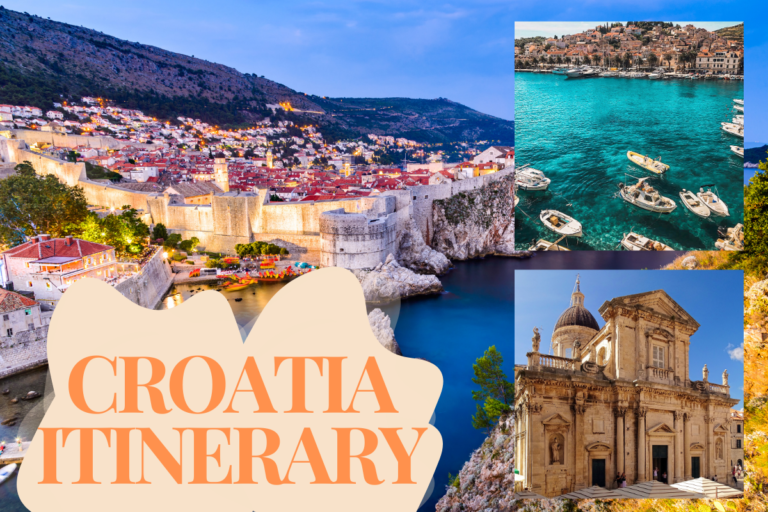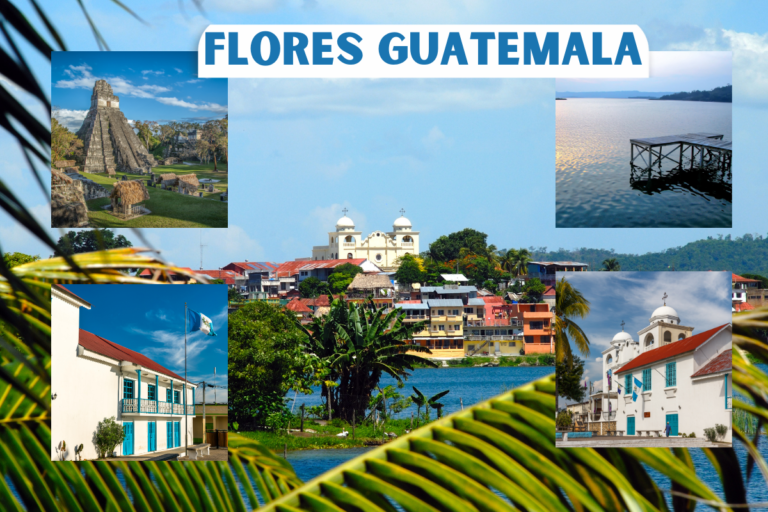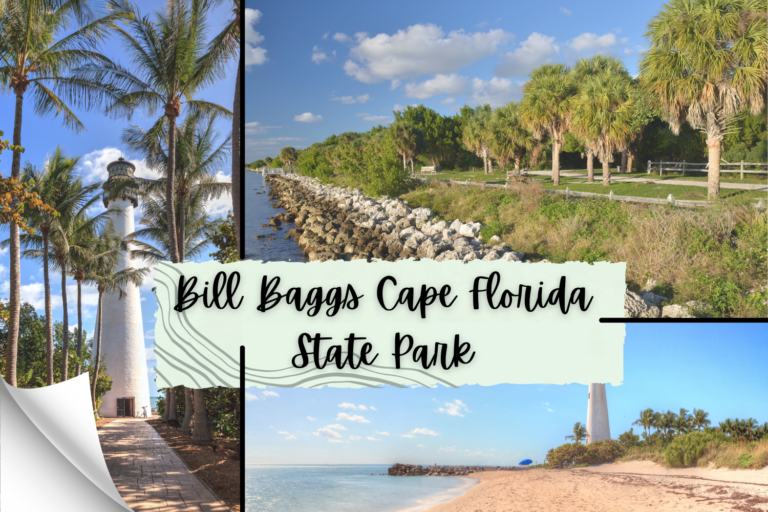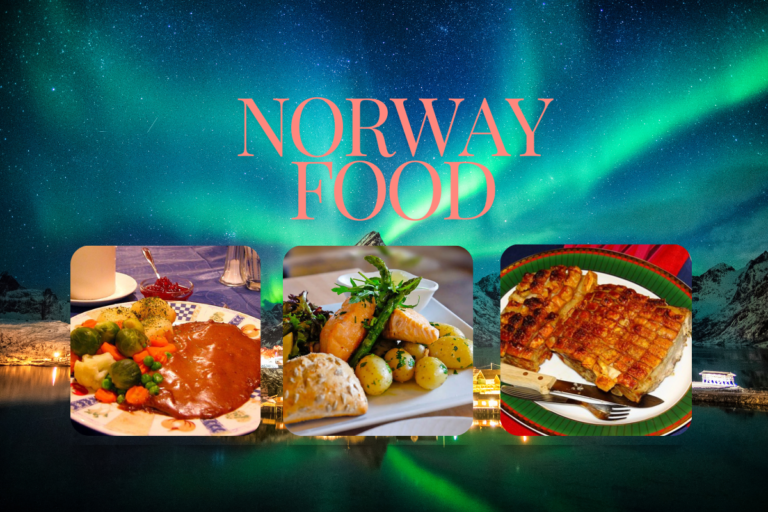What To Do In Madrid? 30 exciting Things and places
Are you heading to Madrid but don’t know what to do in Madrid? Don’t worry! Madrid offers several activities that you can do and make your trip memorable.
Madrid is a city that never sleeps, and if you are asking what to do in Madrid, prepare for exciting activities. Imagine strolling through majestic plazas, indulging in mouth-watering tapas, and diving headfirst into a nightlife that pulses with energy feels awesome right? Not just that every corner of this vibrant city promises something extraordinary.
So, what are you waiting for? Let’s find out the answer to what to do in Madrid in the blog What to do in Madrid and the top activities you should try in Madrid. Stay tuned!
What To Do In Madrid?
Discover the top activities to do in Madrid with us. From historic landmarks to vibrant nightlife, find out what to do in Madrid and make the most of your visit to Spain’s capital.
1. Explore Iconic Landmarks
Explore iconic landmarks in Madrid with our organized list of must-see attractions. Learn what to do in Madrid to experience the city’s rich history and stunning architecture.
1. Royal Palace of Madrid
The Royal Palace of Madrid, or Palacio Real de Madrid, is the official residence of the Spanish royal family, although it is mainly used for state ceremonies in today’s times. It is located in the heart of Madrid and is one of the largest palaces in Europe as it contains more than 3,000 rooms.
Highlights
- Artworks by Caravaggio, Goya, and Velázquez.
- History of the Royal Palace and its significance in the Spanish monarchy.
- The grandeur of the Throne Room, Banquet Hall, and Hall of Mirrors.
2. Puerta del Sol
Puerta del Sol is a major public square in Madrid, known for its central location and significance as a central point in the city. In old times Puerta del Sol was one of the gates of the old city wall, and today it is a vibrant area bustling with activity, commerce, and culture.
Highlights
- The statue of El Oso y el Madroño is a symbol of Madrid.
- Royal Post Office Building and Madrid City Hall.
- The lively atmosphere of Puerta del Sol during New Year’s Eve.
3. Temple of Debod
The Temple of Debod is an ancient Egyptian temple located in Madrid’s Parque del Oeste. It was originally built in the 2nd century BC in Egypt as it was dedicated to the gods Amon and Isis. This temple stands as a historical symbol of the strong cultural ties between Egypt and Spain.
Highlights
- Ancient Egyptian temples, authentic architectural elements, and inscriptions.
- Temple’s fascinating history as a gift from Egypt to Spain.
- Breathtaking views of the sunset over the city from the temple’s vantage point.
4. Plaza Mayor
Plaza Mayor is a historic square in central Madrid, built in the early 17th century during Philip III’s reign. It is surrounded by buildings with balconies, it was designed for public events and markets. The square has hosted bullfights, executions, and royal ceremonies. Today, it’s a lively hub with bustling cafes and a rich cultural atmosphere.
Highlights
- Admire the classic 17th-century architecture of Plaza Mayor.
- The square’s rich history, hosted bullfights, royal ceremonies, and public executions.
- The statue of King Philip III stands in the center of the square.
2. Immerse in Art and Culture
Immerse yourself in Madrid’s vibrant art and culture scene. Find out what to do in Madrid with visits to world-class museums and historic landmarks.
1. Museo Nacional Centro de Arte Reina Sofía
Museo Nacional Centro de Arte Reina Sofía, established in 1992, is Madrid’s leading museum for modern and contemporary art. It is located in a former hospital, it features significant works by Spanish artists, including Picasso’s Guernica. The museum also hosts temporary exhibitions and cultural events.
Highlights
- Picasso’s Guernica is a masterpiece of the 20th century.
- Collection of works by Spanish such as artists Joan Miró and Salvador Dalí.
- The museum’s unique setting blends historic architecture with contemporary art.
- Temporary exhibitions and cultural events.
2. Museo Nacional del Prado
Museo Nacional del Prado, opened in 1819, is Madrid’s premier art museum, famous for its vast collection of European art from the 12th to the early 20th century. It is located in a neoclassical building, it features masterpieces by Velázquez, Goya, and Titian. The museum is celebrated for its extensive collection of Spanish, Italian, and Flemish art, and also hosts rotating exhibitions and cultural events.
Highlights
- Admire iconic works Velázquez’s Las Meninas and Goya’s The Third of May 1808.
- Architect Juan de Villanueva designed the museum’s neoclassical building.
- Temporary exhibitions and cultural events featuring classic and contemporary art.
3. Thyssen-Bornemisza National Museum
The Thyssen-Bornemisza National Museum, established in 1992, is one of Madrid’s major art museums. It is located in the Palacio de Villahermosa, the museum’s collection complements the Prado and Reina Sofía museums, showcasing works from the early Renaissance to contemporary art. The Thyssen-Bornemisza family founded it and includes masterpieces by artists Van Gogh, Rembrandt, and Monet.
Highlights
- A rich collection of Van Gogh, Rembrandt, and Monet.
- The museum’s elegant setting is in the historic Palacio de Villahermosa.
- Thyssen-Bornemisza’s collection of the Prado and Reina Sofía.
- Special exhibitions and cultural events.
4. Museo Sorolla
Museo Sorolla, established in 1932, is dedicated to the work of Spanish painter Joaquín Sorolla. It is located in the artist’s former home and studio, the museum showcases a comprehensive collection of Sorolla’s works, including paintings, sketches, and personal artifacts.
Highlights
- Extensive collection of Sorolla’s works, including iconic paintings.
- The artist’s former residence, preserved as part of the museum, offers a glimpse into Sorolla’s personal and creative life.
- Charming Gardens Sorolla was designed by himself.
- Personal artifacts and memorabilia related to Sorolla.
3. Enjoy Madrid’s Parks
Enjoy Madrid’s beautiful parks with us in a blog What to do in Madrid. Discover serene green spaces, stunning gardens, and recreational areas perfect for relaxation and outdoor activities.
1. Parque Madrid Río
Parque Madrid Río is an expansive urban park along the Manzanares River in Madrid. It opened in 2011 and transformed the former riverbanks and highway into a park that spans 10 kilometers. The park features landscaped gardens, walking and biking paths, playgrounds, and various sports facilities. It also includes several bridges and cultural spaces, making it a popular spot for leisure and community events.
Highlights
- Beautiful views of the Manzanares River and the surrounding cityscape.
- Landscaped gardens, lawns, and tree-lined paths are ideal for walking, jogging, and relaxation.
- Skate parks, basketball courts, and playgrounds for children.
- A range of cultural events and activities.
- Arganzuela Footbridge.
2. Parque del Retiro
Parque del Retiro, commonly known as El Retiro, is Madrid’s most famous park, located in the city center. The park features a large artificial lake, landscaped gardens, monuments, and historic buildings, making it a popular destination for both locals and visitors.
Highlights
- The large artificial lake is a central feature of the park with scenic views.
- Palacio de Cristal is a glass and iron structure.
- The charming Rose Garden (La Rosaleda).
- The impressive monument is dedicated to King Alfonso XII.
- Historic structures, including the Casa de Vacas and the Velázquez Palace.
3. Casa de Campo
Casa de Campo is Madrid’s largest public park, covering over 1,700 hectares on the western edge of the city. It was originally a royal hunting ground, it has been transformed into a vast recreational area featuring forests, lakes, and open spaces. The park offers a range of outdoor activities, including hiking, cycling, and boating, and includes the Madrid Zoo and Aquarium.
Highlights
- The park’s vast woodlands and open fields are ideal for hiking, jogging, and picnicking.
- Madrid Zoo and Aquarium are located within the park.
- Paths for cycling and walking.
- Casa de Campo Pavilion.
4. Plaza de Santa Ana
Plaza de Santa Ana is a lively square located in Madrid’s literary district, known for its vibrant atmosphere and historic charm. The square, named after the nearby Church of Santa Ana, is surrounded by beautiful buildings and features a mix of traditional and contemporary architecture. It is a popular gathering spot with numerous cafes, restaurants, and theaters, contributing to its dynamic cultural scene.
Highlights
- Historic and modern buildings.
- Nearby Church of Santa Ana, is an important historic landmark.
- Cultural events and performances at the Teatro Español.
- Historic theater located, a key venue for Spanish drama.
- Spanish poet and playwright Federico García Lorca.
5. Parque de El Capricho
Parque de El Capricho is a historic park located in the northeastern part of Madrid. Designed in the late 18th century by the Duke of Osuna, the park features a Romantic landscape style with diverse gardens, water features, and historical structures. It offers a peaceful retreat from the city with its carefully landscaped grounds, decorative pavilions, and tranquil atmosphere.
Highlights
- Winding paths, scenic lakes, and lush greenery.
- Hanging Garden, cascading greenery, and intricate stonework.
- Palacio de los Duques de Osuna and the rustic Hermita de San Isidro.
- Ornamental lake, which adds to the serene and reflective ambiance of the park.
4. Savor Spanish Cuisine
Savor Spanish cuisine with our guide on what to do in Madrid. Discover the city’s best tapas bars, traditional eateries, and culinary experiences that showcase Spain’s rich food heritage.
1. Huevos Rotos
In Spain, huevos rellenos are a holiday favorite and a popular choice in Madrid tapas bars. They are filled with a mixture of tuna and red pepper blended into the egg yolk. However, this classic dish is wonderfully versatile, allowing you to add your unique twist.
2. Bocadillo de Calamares
Bocadillo de Calamares is a traditional food, that features crusty bread filled with simple yet delicious flour-coated, deep-fried squid rings. For a touch of extra flavor, some locals add a layer of tomato and paprika puree or a dollop of homemade garlic mayonnaise. To truly enjoy this Madrid classic, pair your bocadillo with a refreshing cold caña of beer.
3. Churros con Chocolate
Churros are a quintessential part of Madrid’s nightlife, perfect for revelers heading home in the early hours. It served with a rich, thick hot chocolate are a popular choice. The most iconic spot for churros is San Ginés. This historic venue has been delighting both locals and visitors with its sweet fried treats for over a century.
4. Regalitos de Rabo de Toro
Spain’s famous bull tail stew, rabo de toro, originates from the southern city of Córdoba. However, Madrid offers one of the most unique and delectable versions of this classic dish. The bull tail meat is slow-cooked to perfection over several hours, then wrapped in a savory pastry and crowned with a roasted red pepper. A final drizzle of extra sauce completes this innovative and mouthwatering presentation.
After testing the best Spanish dishes and wondering what to do in Madrid find out more exciting activities.
5. Experience Madrid’s Nightlife
Experience Madrid’s vibrant nightlife with our guide on what to do in Madrid. Discover top bars, lively clubs, and exciting evening entertainment options that capture the city’s dynamic energy.
1. Joy Eslava Madrid
Joy Eslava, located in a historic theatre in Madrid, is a hotspot for party enthusiasts. With a diverse music mix of pop, rock, and electronic, it offers an unforgettable dance experience. Whether you’re dancing to modern hits or retro favorites, Joy Eslava’s lively vibe and energetic crowd guarantee a thrilling night out.
2. Teatro Kapital
Teatro Kapital is Madrid’s premier nightlife hotspot. This multi-story nightclub features seven distinct floors, each offering its own unique vibe and music genre. It offers everything from hip-hop rhythms on the ground floor to pulsating electronic dance music on the rooftop terrace. Teatro Kapital delivers a unique clubbing experience.
3. Casino Gran Madrid
Try your luck in Casino Gran Madrid, one of Europe’s largest casinos, located just outside the city center. Whether you are an expert or a newcomer eager to try blackjack, roulette, or poker, the casino provides a diverse range of games and entertainment. Revel in live music, savor gourmet dining, and participate in thrilling tournaments as you experience the richness and allure of Madrid’s top gaming venue.
4. Club Sala BUT
Club Sala BUT is a dynamic hotspot in Madrid’s nightlife, featuring a rich blend of live concerts, DJ performances, and themed parties. Situated in the city center, this versatile venue offers a vibrant atmosphere and an extensive range of music genres. Sala BUT provides a unique experience for both music enthusiasts and partygoers.
5. Gabana Music Club
Gabana Music Club, located in Madrid’s upscale Salamanca district, embodies luxury and elegance. Popular with celebrities and socialites, the venue boasts sleek decor, plush furnishings, and a high-energy vibe. Known for its dynamic DJ sets and live performances, Gabana offers a top-tier nightlife experience with signature cocktails and a dazzling dance floor. It’s the go-to spot for an extravagant night out in Madrid.
6. Discover Local Markets
Discover local markets with our guide on what to do in Madrid. Explore bustling markets, taste fresh produce, and immerse yourself in the city’s vibrant shopping and culinary scene.
1. El Rastro
El Rastro, Spain’s largest open-air flea market, takes over La Latina every Sunday from 10:00 am to 3:00 pm. It features an array of antiques, new and second-hand clothing, and various trinkets. While fresh produce isn’t on offer, the market’s location is perfect for enjoying some of Madrid’s best tapas bars. A visit to El Rastro is a must-do for anyone in Madrid!
2. Mercado de San Miguel
San Miguel Market is a must-visit for both tourists and locals, located just a minute’s walk from Plaza Mayor. With 33 stalls, it offers a range of fresh produce, fish, meats, and prepared foods, though it can be a bit pricey. The market’s upscale design and mini bodegas make it a paradise for food and wine enthusiasts. For a more relaxed experience, visit in the early morning or late evening to avoid the crowds.
3. Mercado de San Antón
Mercado San Antón, located in Madrid’s lively Chueca neighborhood, is a contemporary food market spread over three levels. The main floor offers high-quality fresh produce, fish, and meats. The second floor features a variety of food vendors serving everything from Asian to Italian to Spanish tapas and the rooftop terrace on the third floor is a hotspot for locals, offering a vibrant atmosphere with great music and seating. The terrace is a popular spot and gets busy quickly.
4. Mercado Ildefonso
Mercado Ildefonso in Malasaña transforms from a vibrant food market by day to a bustling hotspot by night. Located near Plaza de San Ildefonso, it offers a mix of fresh and prepared foods, a stylish rooftop terrace, and gastro bars. It features ample seating for a relaxed experience, making it a great hangout spot. For your next evening adventure, make sure to kick off in Malasaña!
5. Mercado de la Paz
Mercado de la Paz in Madrid’s upscale barrio offers a more exclusive market experience. Tucked away in the neighborhood, this indoor/outdoor market supplies mainly to local families and provides a strong sense of community. While it may not be as bustling as other markets, it excels in fresh seafood, produce, and meats. The market’s supermarket-style layout makes it ideal for stocking up on essentials.
Best Restaurants in Madrid
After exploring so many places in Madrid and still wondering what to do in Madrid visit the best restaurants in Madrid.
- Restaurante MONTIA
- Ugo Chan
- Smoked Room Madrid. Fire Omakase by Dani García
- Coque
- Corral de la Morería
- Desde 1911
- VelascoAbellà
- DiverXO
Best Bars in Madrid
After exploring so many places in Madrid and still wondering what to do in Madrid hit the best bars in Madrid and enjoy drinks.
- Harrison 1933
- Barmitón
- La Esperanza
- Gran Clavel
- La Ardosa
- Arima
Explore the Neighborhoods of Madrid
Explore the diverse neighborhoods of Madrid with our guide on what to do in Madrid. Discover unique areas, from historic districts to trendy quarters, and experience the city’s rich local culture and charm.
1. La Latina
If you don’t know what to do in Madrid explore La Latina a historic and vibrant neighborhood in Madrid, known for its narrow streets, traditional architecture, and lively atmosphere. Located in the heart of the city, it is famous for its tapas bars, bustling markets, and cultural heritage. The area retains a charming, old-world feel with its winding alleys, historic buildings, and vibrant nightlife.
Highlights
- Tapas Bars
- El Rastro Market
- Historic Streets
- Plaza de la Cebada(bustling square)
- Basilica de San Francisco el Grande
2. Barrio de Salamanca
After exploring Madrid you have no clue what to do in Madrid visit Barrio de Salamanca an upscale district in Madrid, known for its elegant streets, high-end shopping, and sophisticated ambiance. It was established in the late 19th century, it is famous for its wide avenues, luxurious boutiques, and impressive architecture. The area is a hub of Madrid’s affluent lifestyle, offering a blend of cultural attractions, fine dining, and chic residential areas.
Highlights
- Calle Serrano
- Grand buildings and historic mansions
- The Museum of Lázaro Galdiano and other cultural sites
- Gourmet Dining
- Plaza de Colón
- Christopher Columbus Monument and nearby cultural institutions.
3. Lavapiés
Lavapiés is a vibrant and eclectic neighborhood in Madrid known for its multicultural atmosphere and artistic flair. If you are wondering what to do in Madrid after exploring top activities visit Lavapiés, located in the city center, it has a rich history and is characterized by its narrow streets, colorful murals, and diverse community. Lavapiés is a hub for cultural activities, street art, and a wide range of international cuisines.
Highlights
- Street Art
- El Rastro Market
- La Casa Encendida and Teatro Valle-Inclán
After learning about various activities in Madrid, from exploring historical sites to wandering through local markets, you will finally have an answer to the question: What to do in Madrid?
FAQs
Is 3 days enough to visit Madrid?
A long weekend in Madrid is the perfect amount of time to see the main highlights of the city without having an itinerary that’s too jam-packed. With 3 days in Madrid, you’ll visit museums, markets and palaces, whilst also taking time to relax in the city’s plazas, parks, and rooftop bars.
Is 2 days enough to see Madrid?
With 2 days, you can do a walking tour to understand Madrid’s layout, history, and significance, visit both the Prado Museum and the Royal Palace, walk in Retiro Park, and eat your way through La Latina and Malasaña.
What is worth seeing in Madrid?
Madrid is home to a collection of the world’s best art galleries, and the three most famous are handily located close to each other in a triangle. The Prado (classical paintings), The Reina Sofia (modern art) and the Thyssen-Bornemisza (a little bit of everything) are full of artistic riches well worth exploring.







